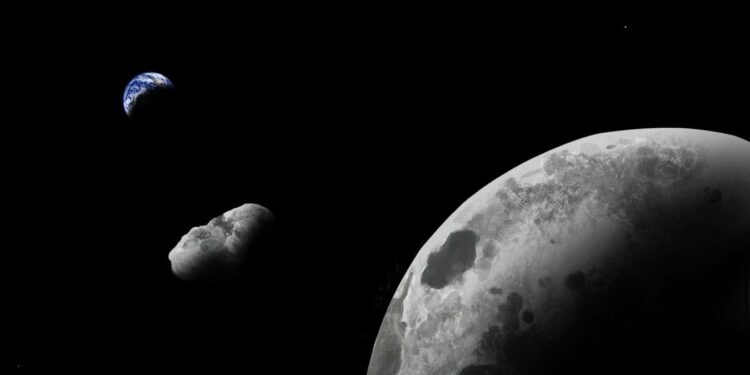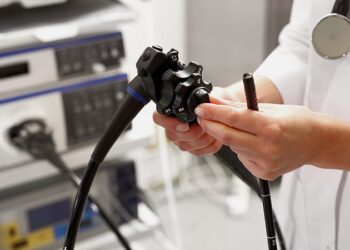
An artist’s impression of Earth’s quasi-satellite Kamo`oalewa, the first destination of the Tianwen-2 mission
Addy Graham/University of Arizona
Final preparations are under way for China to launch an uncrewed craft to visit both an asteroid and a comet, in the hope of learning more about the space rocks in our solar system.
The Tianwen-2 mission by the China National Space Administration (CNSA) will collect a 100-gram sample from the asteroid Kamoʻoalewa and return it to Earth. After dropping off the sample, the probe will use our planet’s gravity as a slingshot to boost itself towards the comet 311P/PanSTARRS, which it will observe remotely.
The mission is due to launch from the Xichang Satellite Launch Center in Sichuan province on 29 May. It won’t be the first to return samples of asteroids to Earth, as both NASA’s OSIRIS-REx and JAXA’s Hayabusa missions have already done that. But it will be China’s first mission to an asteroid involving the return of a rock sample, and it is likely to be the first mission to a unique type of body called a quasi-satellite.
Quasi-satellites like Kamoʻoalewa don’t strictly orbit Earth, but travel in a similar orbit to us around the sun, swinging elliptically around our planet as they do so. This unusual situation has led scientists to suspect that this particular one is a chunk of the moon ejected millions of years ago by an asteroid impact.
On the other hand, 311P/PanSTARRS has an asteroid-like orbit – spinning around our sun in the asteroid belt between Mars and Jupiter – but with an appearance more like a comet because it has tails. These are suspected of being bits of dust and rubble flung out from its spinning body.
The CNSA has previously said that 311P/PanSTARRS is a “living fossil”, making it useful for studying the early material composition, formation process and evolutionary history of the solar system. And Tianwen-2 will provide scientists with a better understanding of both Kamoʻoalewa and 311P/PanSTARRS. However, the results won’t come quickly: the craft is due to reach 311P/PanSTARRS in 2034, and even the Kamoʻoalewa sample is expected to return to Earth only in late 2027.
Exactly how much the CNSA will share about the discoveries is also unclear. Leah-Nani Alconcel at the University of Birmingham, UK, says the mission’s outline is known, and one likely goal is to study the differences between the asteroid and the comet to gain a deeper understanding of the range of bodies in our solar system, but precise details haven’t been forthcoming.
Alconcel’s previous experience working with the CNSA on the Double Star satellite leads her to suspect that the agency will hold on to the resulting scientific data tightly. “It was extremely difficult to negotiate [with the CNSA],” says Alconcel. ”Once they kind of had some information from us, they were not very keen to reciprocate. There will not be a public repository of this data, I don’t think.”
She says that the mission is daring, as Kamoʻoalewa is spinning, which will make landing harder. Navigation algorithms are likely to demand such powerful computers that images and sensor readings will be sent back to Earth for computation. “If we were to always pick lovely, cooperative objects, we wouldn’t learn a lot,” she says. “There’s a lot that could potentially go wrong.”
The CNSA didn’t respond to New Scientist‘s request for interview.
Topics:
Source link : https://www.newscientist.com/article/2479469-china-is-readying-a-mission-to-two-rocky-bodies-in-our-solar-system/?utm_campaign=RSS%7CNSNS&utm_source=NSNS&utm_medium=RSS&utm_content=home
Author :
Publish date : 2025-05-21 10:00:00
Copyright for syndicated content belongs to the linked Source.














